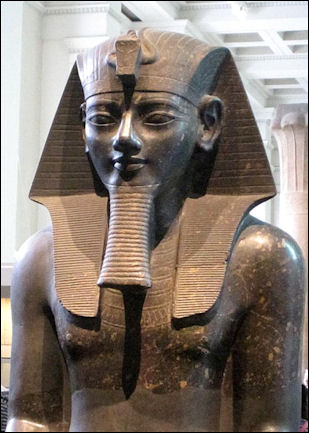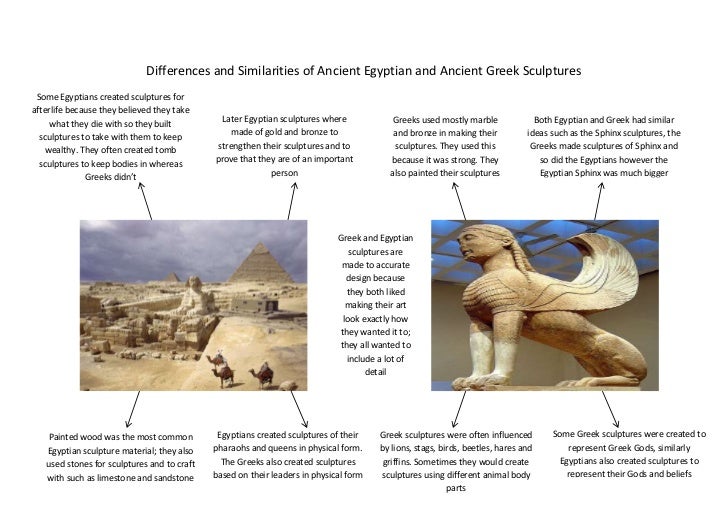Much of the artwork created by the Ancient Egyptians had to do with their religion. Engravings lined the inside of tombs and are the most common and well-known form of Ancient Egyptian art.

Ancient Egyptian Sculpture Facts And Details
Much of this artwork was there to help the Pharaohs in the afterlife.

. Pyramids were built with the purpose of being able to withstand time and essentially las View the full answer. The pyramids were perfect for holding items that would help the pharaoh in his afterlife. Pyramids were built through the entire reign of the pharaoh to provide a grand tomb for them in the afterlife.
Statues were one of the most important symbols of divinity and that is why the big sculptures were built in order to represent the queens and Pharaohs who were famous. They would fill the tombs of the Pharaohs with paintings and sculptures. 3 Outline-relief where only the outlines of figures are chiselled.
Much of this artwork was there to help the Pharaohs in the afterlife. Why were sculptures of pharaohs created. They produced massive sculptures and tombs called pyramids that are one of the Seven Wonders of the Ancient World.
They would fill the tombs of the Pharaohs with paintings and sculptures. Much of the artwork created by the Ancient Egyptians had to do with their religion. Ancient Egypt is one of the most remarkable societies in human history.
Much of this artwork was there to help the Pharaohs in the afterlife. The temples often held large statues of their gods as well as many paintings on the walls. It was to ensure that the body as a vessel for the ka was complete for the journey to the next life.
The side view of the person or animal was generally shown and paintings were often done in red blue green gold black and yellow. Egyptian relief sculptureis executed in various modes as follows. The temples often held large statues of their gods as well as many paintings on the walls.
Flint and other hard stone was used to carve the softer rocks while. 1 Bas-relief where the figures project slightly from the background. The engravings depicted the pharaohs life the gods and legends about them.
Eventually though people began to break into the pyramids and steal the treasures. On occasions where the Pharaohs retinue and wives were killed to accompany him to the afterlife statues of them were made as well. It is this re-created.
Solution- The sculptures of the pharaoh inside the pyramids were created because The pyramids were created in order to protect the bodies of deceased pharaohs. It ended when greece fell under roman control. Because they were considered both human and divine pharaohs were believed to become mediators between gods and humans after death.
Sculptures of pharaohs were created to ensure the Ka would still have a body to reunite with in case anything happened to the body. The temples often held large statues of their gods as well as many paintings on the walls. They would fill the tombs of the Pharaohs with paintings and sculptures.
Explain why Egyptian paintings show the head arms legs and feet in profile but show the eyes and shoulders as seen from the front. Apart from the statues in ancient Egypt you have the temples. After all the Pharaoh would still need them when he.
Egyptians had a number of natural stones at their disposal to create art. Feb 28 2022 66 tacotown2142 said. See answer 1 Best Answer.
Sculptures of the pharaoh were created and placed in the pharaohs pyramid in order to hold his or her spirit or ka. It first began with Philip II then his successor alexander the great marched his army from one country to another. How did Egyptians make art.
Hatshepsut in particular was a successful ruler but many inscriptions and monuments about her were destroyed after her deathperhaps to stop future women from becoming pharaohs. Explorers and archaeologists have discovered these. Though the pyramids had been looted and cleaned before Egyptologists could examine them there is significant evidence that they held boats wooden statues stone carvings clothing food and luxury items that the pharaoh would have needed.
Otherwise it would be doomed to spend eternity in a deformed state. 2 Sunken-relief where the background protrudes in front of the figures. Artists at this time were balking tradition much like the.
This statue was normally made from precious metal. The purpose of tomb paintings was to create a pleasant afterlife for the dead person with themes such as journeying through the afterworld or deities providing protection. The pyramids of Egypt were built as tombs for ancient pharaohs.
Various other women may have also ruled as pharaohs regnant or at least regents before Hatshepsut as early as. Although the mummified body of the deceased was intended to last forever these figures carved in. After their deaths many pharaohs were entombed and surrounded by riches they were meant to use in the afterlife.
Statues were one of the most important symbols of divinity and that is why the big sculptures were built in order to represent the queens and Pharaohs who were famous. Much of the artwork created by the Ancient Egyptians had to do with their religion. See full answer below.
Rather than serving as realistic portraits of their patrons Egyptian funerary statues such as that of Menkaure and his wife from the Fourth Dynasty were meant to serve as eternal homes for the spirit of the deceased or the ka. He ruled the Egyptian New Kingdom for sixty-six years. Its artists were extremely skillful and confident they used bronze and marble they were more intrested in faces because they were considered a mirror of inner emotions.
Sculptures from ancient Egypt depicted the rulers pharaohs as strong vigorous and related to the gods. This statue of the pharaoh carries a lot of art historical weight because it signals a shift from the stiff block-like figures of the past into a softer more realistic mode of portraiture. Since a part of the spirit supposedly remained with the body the entombed body was mummified and surrounded with objects needed in the afterlife including.
The temples often held large statues of their gods as well as. Funerary statues were also central to burial practices.
The Female Pharaoh Hatshepsut New Kingdom The Metropolitan Museum Of Art

The Sculptor In Ancient Egypt The Australian Museum

Art And Power In Ancient Egypt Cleveland Museum Of Art

Egyptian Sculpture For Kids History For Kids
Colossal Seated Statue Of A Pharaoh Middle Kingdom The Metropolitan Museum Of Art



0 comments
Post a Comment